Small hunters MO-4 "midges"
During the Great Patriotic War, the main combat load fell on the Soviet "mosquito" fleet - torpedo boats, armored boats, patrol boats and small hunters, smoke boats, minesweepers, air defense boats. The most difficult was the work of small hunters, MO-4, who fought with enemy submarines in the Black Sea and Baltic.
Soviet-style small hunters
Submarines became a real threat to surface ships during the First World War: the German submariners were the “trendsetters”, but their colleagues from other countries were not far behind. Shortly after the outbreak of hostilities, the tonnage of the ships sunk by the submarines exceeded the losses from surface ships. “Getting it out” from submarines and warships - the German U-9 sank three British cruisers, and the U-26 Russian armored cruiser Pallada. Under these conditions, the fleets of all countries began to frantically search for ways to combat the underwater threat.
In the Russian Empire, they decided to use small high-speed boats to combat submarines. They installed several guns and machine guns and used for escort service. These small boats have established themselves as a universal means of struggle at sea and, in addition to escorting, they were involved in other tasks. The most successful were the “fighter boats” of the Greenport type built in the USA. They took an active part in hostilities during the First World War and on the fronts of the Civil War. Some of them survived and became part of the Soviet fleetbut by the mid-20s they were all written off.
In the interwar period in all countries, submarines were actively developed and it was necessary to look for effective ways to combat the threat from underwater. In the USSR, in 1931, they began designing a small hunter of submarines of the type MO-2. Moreover, it was created as a single type of small warship; in peacetime, he had to perform tasks for the protection of the state border, and in the military to act in the fleets. Another condition was the possibility of transporting the hull of the boat by rail. It was built around 30 boats, but in the process of testing and operation revealed their many design flaws. Construction was stopped, and in 1936, work began on a new small hunter type MO-4. It took into account the shortcomings of the predecessor, and the designers managed to create a successful ship, which during the operation proved to be best. The hull of the boat was built of first-class pine and had a good durability. With small sizes, he received powerful weapons, could be used for trawling (equipped with a kite trawl or boat paravan-trawl) and mine settings. Six mines of the P-1 type were taken aboard, either four obs. 1908, or two obraz. 1926, or four mine defenders. To search for submarines, the hunters installed the Poseidon sound-locator, and from 1940, the Tamir hydroacoustic station. Three petrol engines GAM-34BS (power 850 hp), each were simple and reliable in operation. They provided the boat with a high speed, after 30 s after receiving the order, he could give a small move, and after 5 the min was full. The small hunter had good maneuverability and sufficient seaworthiness (up to 6 points). His appearance was distinguished by the dynamic form, ease and swiftness of the course. The MO-4 improved the habitability: the whole crew received sleeping places, all the living quarters had ventilation and heating, placed a cabin and a galley on the boat. Tests that took place on the Black Sea in 1936-37 did not reveal serious flaws in the MO-4 design and soon began construction of a large series for the Navy and the NKVD. Serial construction of boats was deployed at the Leningrad plant of the NKVD No. XXUMX. Before the war, 5 boats were built on it: the 187 MO was replenished with fleets and flotillas, 75 joined the NKVD Sea Border Guard. Some of the small hunters that were part of the Red Banner Baltic Fleet (CBF) took part in the Soviet-Finnish “winter” war. The maritime border guards had to develop the sea borders of Lithuania, Latvia and Estonia, which became part of the USSR in 113. After the start of the war with Germany, MO-1940 type construction was carried out at several factories of the country: №4, №5, №345, Astrakhan Shipyard Narkomrybprom and Moscow shipyard People's Commissariat-Fleet. Despite all the difficulties, in heavy war years 640 boats of the type MO-74 were built.
Small hunters take the fight
By the beginning of World War II, the Red Banner Baltic Fleet included 15 small hunters and 18 patrol boats. The NKVD had 27 boats of MO-4 type: 12 in Tallinn, 10 in Liba-ve, 5 in Ust-Narva. In the first weeks of the war, it included boats from the NKVD Maritime Security, and new boats of Leningrad construction continued to be received. As already noted, in Leningrad, at plant No. 5, construction of boats of the type MO-4 continued, in total about 50 boats were built. Part of the MoD boats was transferred to Lake Ladoga, where a military flotilla was created.
On the night of June 21-22, 1941, duty in front of naval bases was carried out at Tallinn SKA No. 141, at Libava SKA No. 212 and No. 214, at Kronstadt SKA No. 223 and No. 224. They were the first to repel German raids aviationwhich bombed ports and put mines on the fairways. The mine danger became the main one in the Baltic in 1941, our fleet was not ready to deal with the mine danger and suffered heavy losses. For example, on June 24-27, MO boats took part in the deployment of the cruiser Maxim Gorkoy from Tallinn to Kronstadt. His nose exploded with a mine explosion. Our fleet began to set up defensive minefields, and the MO-4 boats also provided for their deployment. They themselves began to put mine banks in skerries off enemy shores. Every day, small hunters had to repel the attacks of enemy aircraft, torpedo boats and submarines, keep watch at bases and ports, guard transports and convoys, escort submarines and warships that went on combat operations.
Our troops could not repel the German offensive on the border and soon the Wehrmacht approached Tallinn. Violent battles took place on the outskirts of the main base of the Baltic Fleet; the marines and the Red Banner Baltic Fleet took an active part in them. The fleet ensured the delivery of marching supplies and ammunition from the mainland. Wounded and civilians were taken back. The defense of Tallinn lasted 20 days, but by the morning of August 28 the city had to be left. All the troops, their weapons and the most important cargo were loaded onto numerous ships, transports and auxiliary vessels. These forces of the fleet, which were part of the four convoys, began a breakthrough through the Gulf of Finland to Kronstadt. Among them were 22 boats of the MO-4 type: six in the detachment of the main forces, four in the guard detachment, seven in the rear guard, two MOs guarded convoys No.1 and No.3, one MO entered guard of the convoy No.2. They had to go 194 miles, both sides of the Gulf of Finland were already occupied by the enemy, who put minefields, concentrated aviation and mosquito forces, used coastal batteries. The few minesweepers of the Red Banner Baltic Fleet were able to wipe only a small strip, the width of this fairway was only 50 m. Many slow-moving sluggish ships left it and were immediately undermined. The situation was aggravated by numerous floating mines that were floating in the ground area. They had to literally push away from the sides. Boats immediately went to the place of death and rescued the survivors. Sailors of boats raised to the deck of frozen crippled people covered with a thick layer of fuel oil. They were warmed, clothed and provided first aid. One of the saved himself was saved by a boat - a cadet at VVMU named after Frunze Vinogradov swam up to the board of the MO-204, but he saw a floating mine, took it away from the boat with his hands, and only after that clutched at the rescue end. During the transition, 15 warships and 31 transport were killed, 112 ships and 23 vehicles arrived in Kronstadt (there are other data on the number of ships). In addition to Tallinn, there was an evacuation from Moonsund, islands in the Vyborg and Gulf of Finland. The Wehrmacht soon blocked Leningrad. 30 August in the Ivanovo thresholds, reflecting the attacks of the German troops, killed "MO-173" and "MO-174". The fleet was concentrated in Leningrad and Kronstadt, the ships could now operate only within the "Marquise puddle". The boats carried the patrol, escorted convoys, carried out reconnaissance of the place of enemy large-caliber batteries, which fired on the ships and the city. They took part in the Peterhof landing. Fierce battles were fought on Lake Ladoga. German and Finnish troops surrounded the city, aviation attacked the ships of the flotilla, enemy ships began to operate. MO-4 provided the landing of troops, evacuated troops, supported the troops with fire, fought with the aircraft and ships of the enemy. For example, "MO-206" distinguished itself during the battles for the island of Rah-Mansaari 7-10 in September 1941, and "MO-261" took part in laying the sea armored cable in October 1941.
After the loss of Tallinn and the Moonzund islands, the extreme western points of our defense were the Gogland Islands, Lavensaari and the Hanko naval base. The light forces of the fleet were concentrated here. Hanko’s naval defense continued on 164 of the day, from June 22 to December 2. After that, a phased evacuation was carried out. The surviving boats of the MO-4 type became part of the Fighter squad of the Protection of the Water District of Kronstadt. Winter in 1941 was early and harsh: the ice bound the Neva, the navigation in the Gulf of Finland was completed. Already in the middle of November, the boats were raised on the wall and installed on the cells, the motors and mechanisms were unloaded and suspended on the shore. Crews settled in the barracks, in addition to repairing buildings and mechanisms, they were engaged in combat training, patrolling the city and the Neva. The first military navigation is over.
By the beginning of the war, the 74 boats were located on the Black Sea: 28 as part of the Black Sea Fleet, 46 as part of the NKVD Marine Department. On the morning of June 22, MO-011, MO-021 and MO-031 went out to sea, which conducted the trawling of the external raid of Sevastopol, but could not destroy a single magnetic mine. From the first days of the war, the sailors began to track the places where German mines fell near Sevastopol, they were put on the map and then “treated” with depth charges. For example, September 1 MO-011 similarly destroyed three German mines. The Blackflies, as in the Baltic, carried patrols, escorted transports, covered mine set-ups, shot floating mines, and fired anti-submarine defenses. They had to repel massive aviation attacks. For example, September 22 in the area of Tendra "MO-022" attacked ten Yu-87, the boat commander was killed, many crew members were killed and injured, the boat received many holes, and it had to be stranded. Boats took part in providing transportation for the defenders of Odessa, who defended the city for 73 days. They have successfully escorted hundreds of ships and convoys: transports made 911 flights, of which 595 steamers were escorted by small hunters, 86 BTsch and 41 destroyers. 16-17 October 34 patrol boats escorted ships of the caravan on which Odessa was evacuated. Only one transport was lost, which was in ballast. This is the most successful evacuation carried out by the Soviet fleet.
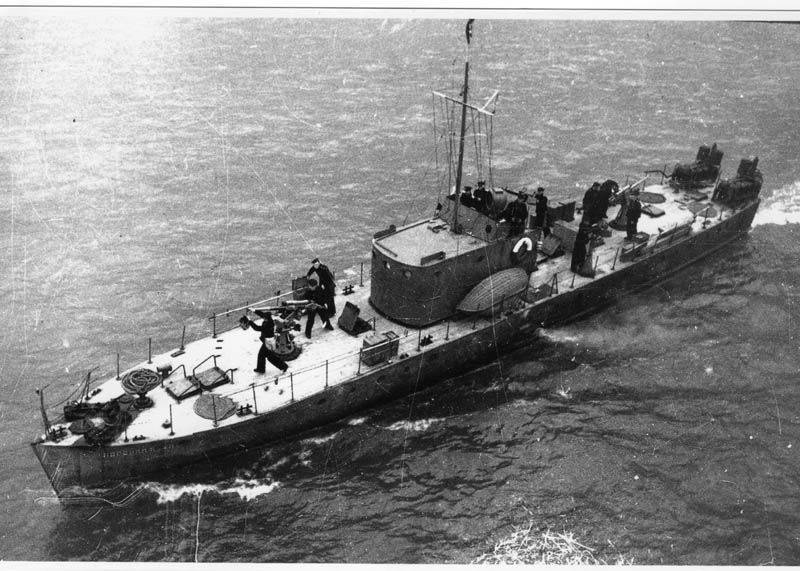
October 30 begins the defense of the main base of the Black Sea Fleet. It took an active part ships and boats OVRa, which were based in Quarantine and Strelets bay. Parts of the Wehrmacht broke into the Crimea, and the large ships of the Black Sea Fleet moved to the Caucasus. The evacuation of the base began, the property of factories and arsenals was exported. This evacuation was covered by boats and, unfortunately, they did not always manage to repel all aviation attacks. For example, two MO-4 (according to other data, "SKA-041") accompanied the ambulance "Armenia", evacuating the personnel of the marine hospital from Sevastopol. 7 November, they could not repel the attack of a single Non-111. A torpedo hit the vehicle, and after a few minutes it sank. More than 5000 people died. Security boats managed to save only eight people. And “MO-011” 8 November for five hours successfully repelled enemy air raids. He managed to deliver without a loss to Novorossiysk a float that towed the Toros icebreaker. Some of the MO-4 also moved to the Caucasus, in Sevastopol there were only the minesweeper T-27, the floating battery No. XXUMX, ten boats of the MO type, nine boats of the CM type, seventeen boats of the minesweepers and twelve TKA. They trawled the Sevastopol fairways, met and escorted ships entering the port, covered them with smoke, conducted an anti-submarine patrol. After the beginning of the winter assault, the situation near Sevastopol deteriorated: German batteries could now fire on our entire territory, enemy aircraft began to operate more actively. To improve the situation, the Soviet command conducted a number of landings: in Kamysh-Burun, Theodosia, Sudak and Evpatoria. MO-3 took an active part in them. We will tell you more about the preparation and conduct of the Evpatoria landing.
On the night of December 6, SKA No. 041 and No. 0141, leaving Sevastopol, landed reconnaissance and sabotage groups in the port of Yevpatoriya. They successfully neutralized the sentries and seized the police department. After collecting information and freeing the prisoners, the scouts left the building. Another group conducted sabotage at the airport. The city began to panic, the Germans opened indiscriminate firing. Our scouts returned without loss to the boats. The information they collected made it possible to prepare the landing. On the evening of January 4, the Fuse, the tug boat SP-14, and seven boats of the MO-4 type (SKA No. 024, No. 041, No. 042, No. 062, No. 081, No. 0102, No. 0125) left Sevastopol. They placed 740 paratroopers, two tank T-37 and three 45-mm guns. They were able to quietly enter the Yevpatoriya port and capture it. They managed to capture the city center, but then the marines met stubborn resistance. The cover ships departed for the raid and began to support the paratroopers with fire. The Germans tightened reserves, called in aircraft and tanks. The paratroopers did not receive reinforcements and ammunition and were forced to go on the defensive. The minesweeper was damaged by aircraft, lost its course and was washed ashore. The boats were damaged and were forced to leave for Sevastopol. They were replaced by ships with replenishment, but because of the storm they could not enter the port. The surviving paratroopers went into the partisans.
The winter storm was repulsed and the situation near Sevastopol stabilized. The Germans continued to bomb and bombard the city, but did not take any active actions. Boats continued to serve. 25 March 1942 in the Streletskaya Bay of Sevastopol, the senior sailor Ivan Karpovich Holubets performed his feat. From the artillery fire on the SKA №0121 the engine room caught fire, the fire was selected to the racks with depth charges. Their explosion would have destroyed not only the boat, but also the neighboring boats. From the patrol boat №0183 with a fire extinguisher IG ran up Blueberry and began to extinguish the fire. But because of the spilled fuel it could not be done. Then he began to drop depth charges overboard. Most of them managed to throw it away, but at that moment an explosion occurred. Sailor at the cost of life saved the rest of the boat. For this feat he was posthumously awarded the title Hero of the Soviet Union.
Having destroyed the Soviet troops on the Kerch Peninsula, the enemy began preparations for a new assault. Sevastopol was blocked from the sea and from the air. The blockade was attended by torpedo and anti-submarine boats, mini submarines, fighters, bombers and torpedo bomber. German aircraft dominated the air. Every ship now broke into a besieged fortress with a battle. After many days of massive artillery preparation and the constant bombing of 7 in June, the Wehrmacht launched an offensive. The forces and resources of the defenders of Sevastopol melted away every day. 19 June the Germans reached the North Bay. Soon began the agony of Sevastopol. The surviving defenders gathered in the area of the 35 battery on Cape Chersonese. Here there were many wounded and the army command personnel was assembled, awaiting evacuation. They did not have ammunition, there was a catastrophic lack of water, food and medicine. But only a few submarines and basic minesweepers reached Sevastopol; not a single large ship arrived at Sevastopol.
The main burden of evacuation lay on the boat MO. In the evening of July 1, SKA No. XXUMX first approached the pier at Cape Chersonese. A crowd of people rushed at him, and he hurriedly walked away from the pier. When he returned to the Caucasus, he was attacked by a torpedo boat and enemy aircraft, but their attacks were repulsed. On the same night, the city’s defenders accepted the MO-052 and MO-021 aboard. During the breakthrough to the Caucasus, the MO-0101 was heavily damaged by aviation. The approached boats removed the survivors, and the boat sank. SKA №021, №046 and №071 took people from Chersonesus and went to the Caucasus. SKA №088 went to Cossack Bay, took on board the steam action of Sevastopol and went to the mainland. At the crossing, aviation attacked him, inflicted heavy damage, but he was met by our boats and brought to Novorossiysk. SKA №029, №028 and №0112 accepted people from the berth at the 0124 battery and went to the Caucasus. At the crossing, four enemy torpedo boats intercepted them and a fierce battle began. One of the TKAs was damaged, SKA No. XXUMX sank, and SKA No. XXUMX managed to break through. SKA №35 during the battle received significant damage and lost the turn. German boats approached him and all those on board were captured by the enemy. The Germans flooded the boat, and the prisoners were taken to Yalta. An 0124 man was taken prisoner, including General Novikov. In the morning of July 028, five boats left Novorossiysk. By the morning of July 0112, they approached Sevastopol and, despite the enemy’s fire, they took on board the defenders of Sevastopol: 31 man SKA No. XXUMX, 2 man was on SKA No. XXUMX, 3 man on SKA No. XXNX and 79 man took SKA No. XXNX (data on SKA No. 019 are absent). On the morning of July 55, the last detachment of six boats headed for evacuation headed for Sevastopol. At Cape Chersonese, they were fired upon by enemy artillery, could not reach the shore, and returned to Novorossiysk without being rescued. The remaining defenders of the fortress surrendered to captivity. So ended the 038-day defense of Sevastopol.
1942 and 1943 campaigns in the Baltic
In the spring of 1942, all work on boats that were part of the Red Banner Baltic Fleet was completed and they were launched at the end of April. Soon, they again began to keep watch on the fairways, to lead and guard the trawling, accompany the convoys and repel the attacks of boats and enemy aircraft. The Germans tried to cut off Soviet communications and concentrated considerable "mosquito" forces in the Gulf of Finland. The fighting took place almost every day, the losses were borne by both sides. For example, in the evening of 30 on June 1942, one of the SKA attacked 12 Me-109 fighters. Their attack lasted only three minutes, but the boat received significant damage. However, the skill of the Soviet motorists grew, they carefully studied the combat experience, paid a high price. The most important task for boats in 1942 was to escort our submarines that broke through to the Baltic. In addition, boats were used to conduct reconnaissance and disembarkation of sabotage groups.
On Ladoga there were two battalions of small hunters and they turned out to be simply irreplaceable - they drove caravans of barges with cargo for Leningrad, escorted convoys with evacuees, carried patrol service, landed reconnaissance and saboteurs to the rear of the enemy. They took part in battles with ships of the enemy flotilla. 25 August 1942 g. “MO-206”, “MO-213” and “MO-215” captured a Finnish boat off Verkkosari island. On the night of October 9, 1942 g. "MO-175" and "MO-214" took an unequal battle against 16 BDB and 7 SKA of the enemy, who planned to fire Suho Island. Actively using fumes, they managed to thwart the plans of the enemy. Unfortunately, in this battle "MO-175" was killed with almost the entire crew. Three sailors were captured. "MO-171" 22 distinguished October 1942 in the defense of the island Sukho from landing. Two Soviet ships and a three-gun battery on the island were opposed by the 23 of the enemy ship, but their attacks were repulsed, and the landing force was dropped into the water of Ladoga. After this, the activity of the actions of the enemy flotilla decreased sharply. Our fleet continued to increase the rate of transport. This made it possible to accumulate reserves and in January 1943 break through the blockade.
Winter 1942-43 CBF boats held in Kronstadt. The situation was not as difficult as in the first blockade winter. This allowed not only to "patch up" the hull, repair all the mechanisms and engines, but also to carry out a small modernization of a number of boats. They tried to strengthen the armament - local craftsmen placed a second pair of DShK machine guns before felling, increased ammunition, some boats received improvised constructive protection (in the form of iron sheets 5-8 mm thick). On the part of the boats installed new hydroacoustics.
The ice drift has not ended yet, and the boats have already been launched and have begun to carry patrol service. The Germans reliably blocked our fleet in the "Marquise Puddle" - in 1943, not a single Soviet submarine managed to break through to the Baltic. The main burden of protecting our communications fell on the crews of torpedo boats, armored boats, minesweepers and small hunters. The battles took place daily and were fought with great ferocity: the enemy tried to attack our convoys with large forces, actively used aircraft and conducted mine setups on our fairways. For example, 23 of May 1943. “MO-207” and “MO-303” repulsed the attack of thirteen Finnish boats. This fight was even told in the Soviet Information Bureau report. A fierce battle took place on June 2 between five Finnish boats and six MO boats. On July 21, four Finnish TKAs attacked two MOs, but the enemy failed to sink any of them. The Finns were forced to retreat. The German historian U. Meister noted: “Due to the sufficient number and heightened vigilance of Soviet escort ships, only a relatively small number of attacks were carried out. For the same reason, it was necessary to abandon the mining on a large scale of the Russian supply routes to Lavensa-ri and Sescar ”.
On the Black Sea
After the fall of Sevastopol, the situation on the Black Sea deteriorated: the Wehrmacht rushed to the Caucasus, our fleet lost most of its bases and was locked up in several small ports, it did not take active steps. The main burden of the fighting was on submarines and the "mosquito" fleet, which provided military transportation, landed saboteurs and reconnaissance groups, hunted enemy submarines, put up mine bombs and conducted trawling. In these operations the boats of the MO type were simply irreplaceable. Their crews tried by all means
to improve the combat capabilities of their ships: they reinforced additional armament, permanent and detachable reservations with a thickness of 5-8 mm (on the navigation bridge, on the tank and on the sides in the area of the benzocister). Four-and six-barreled rocket launchers PC-82ТB, eight-barreled 8-М-8 were placed on several MO boats. They were actively used on the Black Sea both in battles with enemy boats and on targets on the coast during amphibious operations. For example, at the end of the SKN 1942, No.044 and No.084, in the vicinity of Cape Iron Horn, PC was shelled by a German battery. After three eight-shot volleys, she was crushed.
This allowed the reconnaissance group to be landed. 1942-43 total On the Black Sea, 2514 PCs were used by boats.
The most active participation of the Black Sea Defense Ministry took in the ample amphibious operations - in the South Ozereyka, on the Malaya Zemlya, on the Taman Peninsula, the Kerch-Eltigen landing operation. The greatest contribution of the boat contributed to the success of the Novorossiysk landing operation. Large ships were not involved in it, and everything had to be done by the boats of the “mosquito” fleet. Each of the 12 boats MO-4 had to take 50-60 paratroopers on board and lead to the landing site in tow two or three motorboats or longboat with paratroopers. For one flight, one such "coupling" delivered paratroopers with 160 to weapons and ammunition. In 02.44 10 in September 1943, boats, batteries and aircraft attacked the port with torpedoes, bombs, PCs and artillery fire. The port was well fortified, and the Germans opened hurricane aimed artillery and mortar fire on the boats, but the landing of three troops of the landing force began. SKA #081 was damaged during the breakthrough to the port, but landed the 53 paratrooper on the Elevator pier. SKA №0141 was rammed into the left side of the SKA №0108, who lost control, but landed 67 marines on the Old Passenger marina. SKA №0111 without loss broke into Novorossiysk and landed paratroopers to the pier №2 68. SKA №031 under enemy fire broke through to the pier №2 and landed 64 marines. SKA No.0101 landed a paratrooper on the pier No.5 64, and on the way back he pulled out a damaged SKA No.0108 from under attack. SKA No. XXUMX “Sea Soul” failed to break through to the port, was damaged by the enemy’s artillery fire, a fire broke out on board, and the boat was forced to return to Gelendzhik. After the landing of the paratroopers, the surviving boats began delivering ammunition and reinforcements to the bridgehead, guarding communications. Fleet historian BC Biryuk wrote about this assault: "The Novorossiysk operation became a model of courage and determination, courage and courage of sailors from small hunters who fought selflessly and valiantly and showed outstanding military skills." It is not by chance that the commander of the Black Sea Fleet issued an order to welcome small hunters returning to Poti after the Novorossiysk landing operation was completed by building squadron crews of all the ships.
В stories Our fleet has many feats left by the crews of small hunters. Tell you about one of them. 25 March 1943 SKA # 065 was accompanied by the transport "Achilleon", going to Tuapse. There was a strong storm at sea, the excitement reached 7 points. The transport was attacked by German aircraft, but the boat managed to repel all their attacks and did not allow the target to attack. Then the German aces decided to eliminate the interference and switched to the boat. They launched “star” attacks, but the boat commander, Senior Lieutenant P.P. Sivenko managed to evade all the bombs and did not get direct hits. The boat received about 200 holes from splinters and shells, the stem was broken, the wheelhouse shifted, tanks and pipelines were pierced, the motors stalled, the trim on the nose reached 15 degrees. Losses accounted for 12 sailors. The aircraft used up the ammunition and flew away, and on the boat they put the engines in motion and caught up with the transport. For this battle, the entire crew was awarded orders and medals, and the boat was transformed into the Guards. This is the only boat of the Navy of the USSR, honored with such an honor.
In September 1944, the war on the Black Sea ended, but MO-4 boats had to complete two more honorary missions. In November, 1944 returned to Sevastopol squadron. At the transition to the main base of the fleet she was accompanied by numerous boats MO-4. In February 1945, the boats of the type MO-4 were involved in the protection of the Livadia Palace from the sea, where the Allied Yalta Conference was held. For their contribution to the defeat of Germany, the 1 and 4 Novorossiysk, 5 and 6 Kerch divisions of small hunters were awarded the Order of the Red Banner. Ten Heroes of the Soviet Union fought on the Black Sea Defense Ministry.
The final battles in the Baltic
In the 1944-45, the situation on the Baltic Sea changed: our troops unblocked Leningrad, launched an offensive on all fronts, and fought for the liberation of the Baltic states. Finland emerged from the war, and the Red Banner Baltic Fleet ships began to actively use its bases. But the large ships of the Red Banner Baltic Fleet remained in Leningrad and Kronstadt, while only submarines and the “mosquito” fleet fought. Communications of the Baltic Fleet were stretched, the amount of cargo transported increased, the load on the boats of the Moscow Region increased. They were still entrusted with guarding convoys, escorting submarines, landing troops, providing trawling, and fighting the Finnish and German submarines. The Germans began to actively use submarines for action on our communications. 30 July 1944 in the Björkesund Strait by a German submarine was sunk "MO-105". MO-SWW, commanded by Senior Lieutenant A.P. Kolenko. Upon arrival, he rescued 7 sailors from the crew of the sunk boat and began searching for a submarine. This area was shallow, but the boat could not be found. Only in the evening the KM-910 chimney cutter reported that the boat was surfacing. MO-SW attacked her and dropped several series of depth charges (8 large and 5 small) to the dive site. A strong explosion occurred under the water, various objects began to float, the surface of the water was covered with a layer of fuel. And soon six submariners surfaced. They were captured and taken to the base. During the interrogation, the commander of the submarine "11-250" said that the boat is armed with the latest self-guided torpedoes T-5. She was raised to the surface, transferred to Kronstadt, put in a dock and removed the torpedoes. Their construction was studied, and Soviet designers came up with the means to neutralize them. 9 January 1945 in the area of Tallinn "MOI24" sank the submarine "U-679".
For their contribution to the defeat of Germany, the 1 division of motor boats MO became Guards, and the 5 and 6 divisions were awarded orders of the Red Banner. Three Heroes of the Soviet Union fought on the Baltic boats of the Defense Ministry.
Memory
After the end of the war, the surviving boats of the type MO-4 were transferred to the frontier guard. As part of it, they continued to serve until the end of the 50's. Then they were all written off and disassembled. In memory of them, there was only a color feature film “Sea Hunter”, released in 1954. A real “midge” was shot in it. But the glorious deeds of the “black fly” crews during the Great Patriotic War were not forgotten. This is a great merit of veterans who collected letters, memoirs, photographs and other relics of the war years. They volunteer to create rooms of military glory, small museums, published articles about the glorious deeds of the campers.
It is worth noting the activities of Igor Petrovich Chernyshev, who spent the entire war in the midges in the Baltic. At first he was a senior assistant, then he commanded the boat and the compound.
boats. He took part in many battles, was repeatedly wounded. After the war, he collected materials on the participation of the Red Banner Baltic Fleet boats in the war. His articles were published in the Krasnaya Zvezda, Sovetsky Fleet and Red Banner Baltic Fleet newspapers, the magazines Sovetsky Sailor, Sovetsky Soldier, and Model Designer. In 1961, his memoirs “On the Sea Hunter” were published, in 1981, “On Friends-Comrades”.
All my life I devoted to the study of the combat activities of the small hunters of the Black Sea Fleet Vladimir Sergeyevich Biryuk. During the war years he served on the MO-022 and took part in the defense of Odessa and Sevastopol, the battles for the Caucasus, the maritime
landings. He published articles in the magazine “Boats and Yachts” in the collection “Gangut”. In 2005, his fundamental research “Always ahead. Small hunters in the war on the Black Sea. 1941-1944 ». He noted that historians paid unjustly little attention to the actions of the MoD and tried to fill this gap.
With the help of veteran boats in the USSR, they managed to keep two small hunters of the MO-4 type. The Guards "MO-065" of the Black Sea Fleet was installed on the "Little Land" in Novorossiysk. In the museum "Road of Life" in the village Osinovets Leningrad region put "MO-125" Ladoga Flotilla. Unfortunately, time is ruthless, and now there is a real threat of the loss of these unique relics of the Great Patriotic War. We must not allow this, the descendants will not forgive us for this.
The performance characteristics of a small hunter type MO-4 | |
Displacement, t: | 56,5 |
Sizes, m: | 26,9x3,9x1,3 |
Power plant, hp: | 2550 |
Maximum speed, knots: | 26 |
Power reserve, miles: | 800 |
Armament: | 2х45-mm, 2х12,7-mm, 8 large and 24 small depth charges |
Crew, man: | 24 |
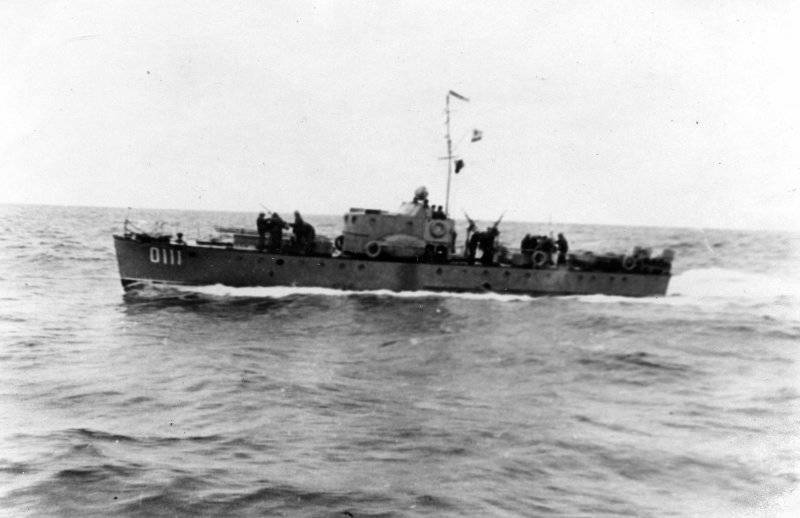
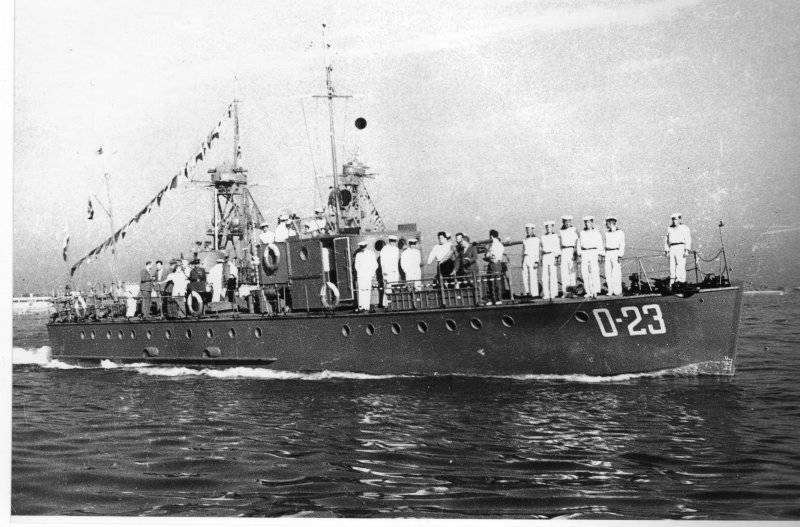
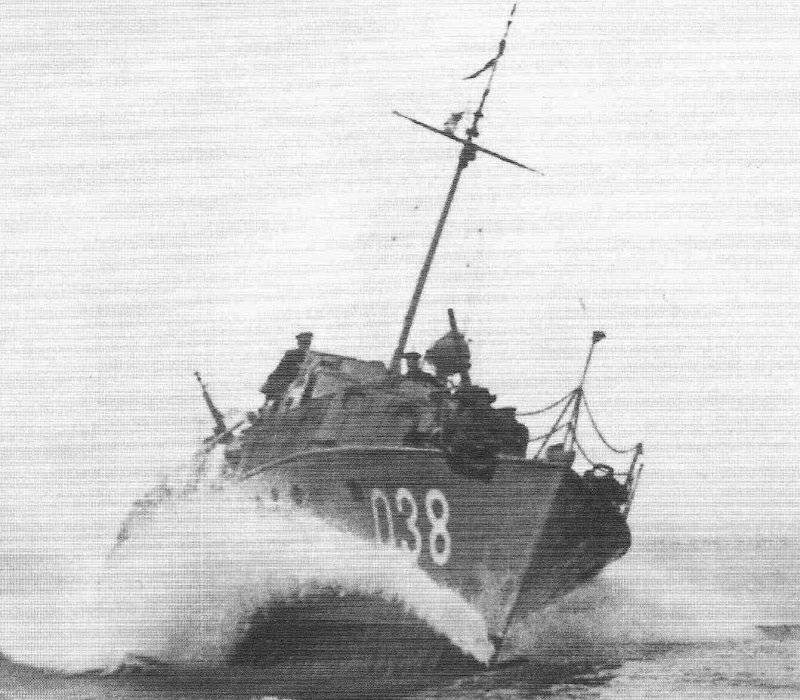
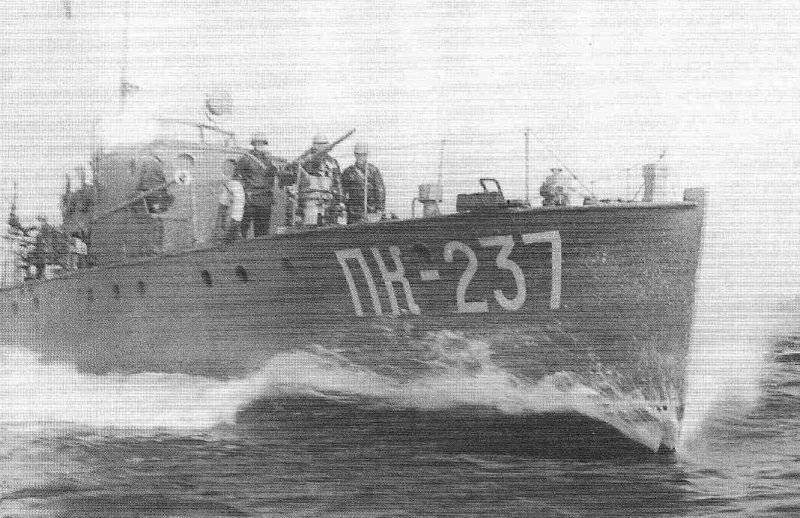
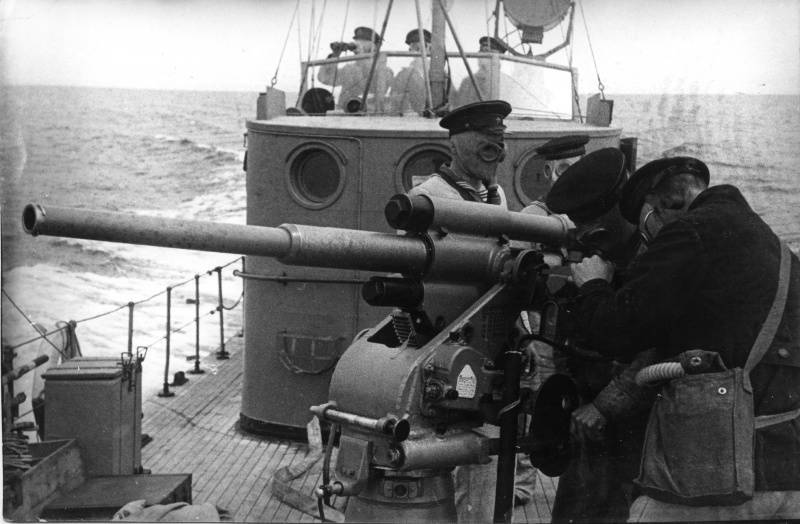
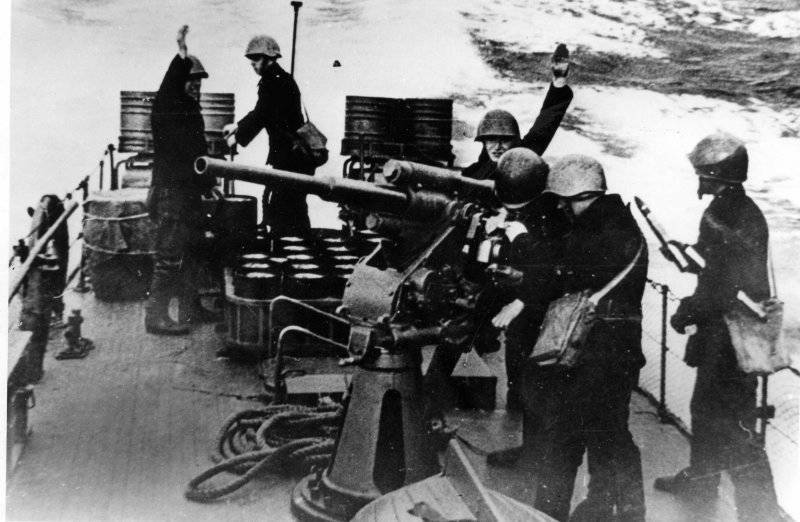
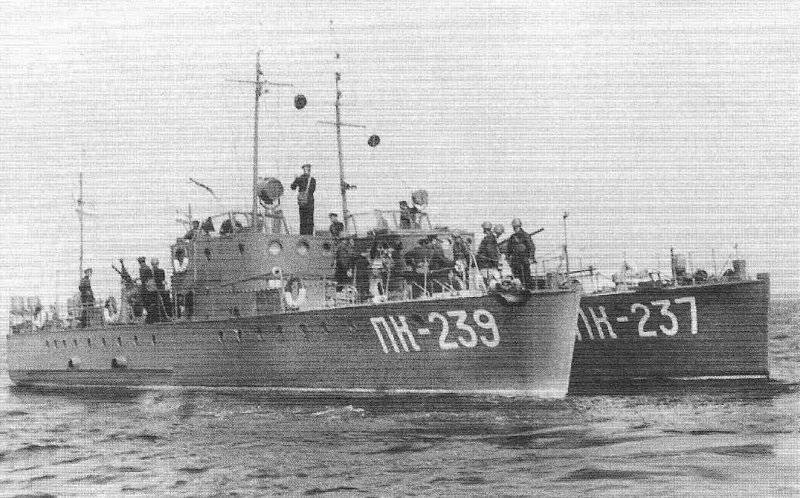
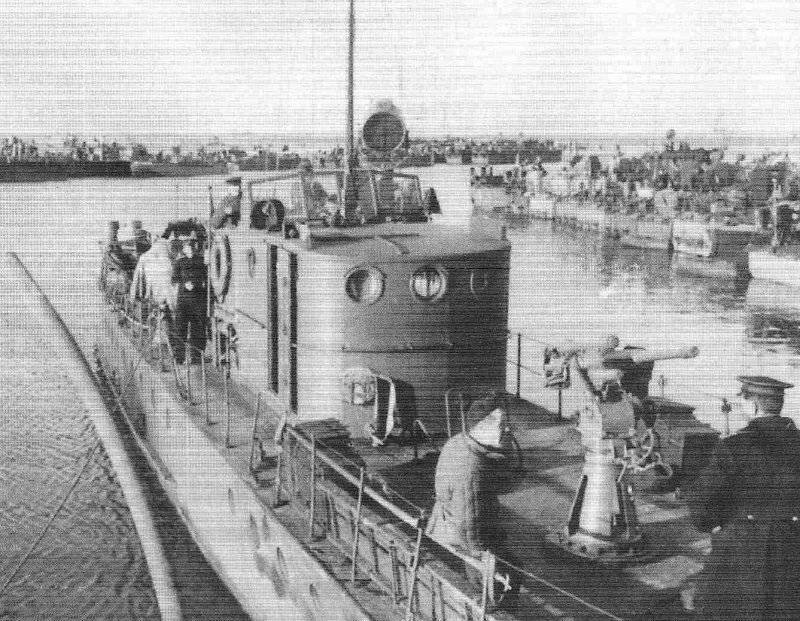
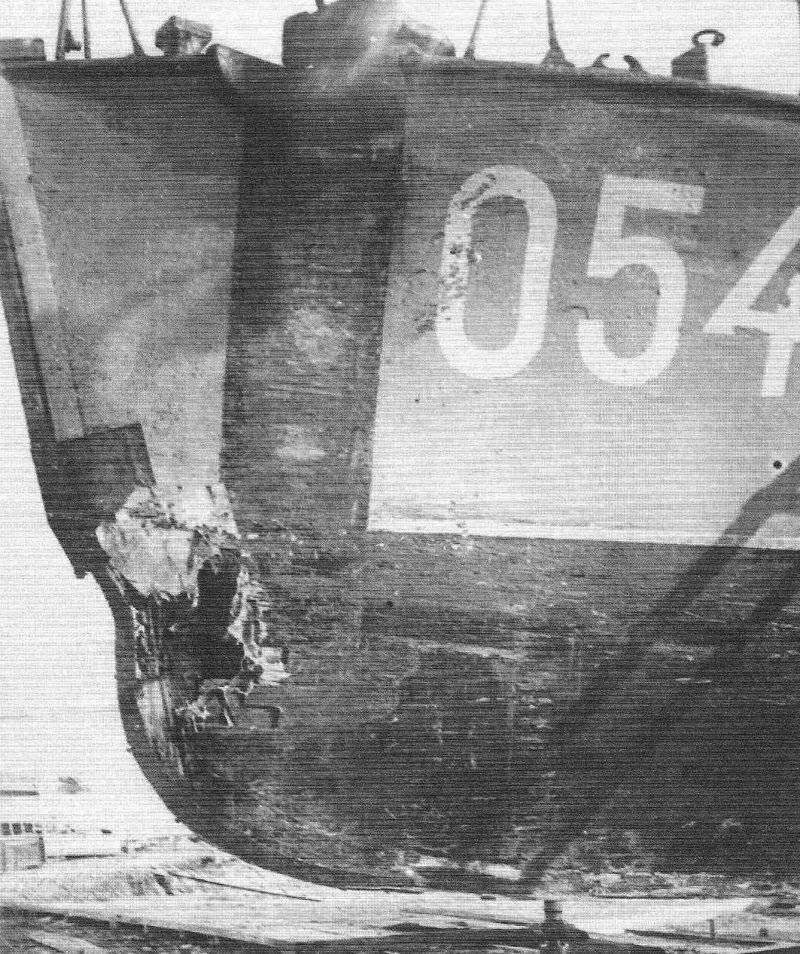
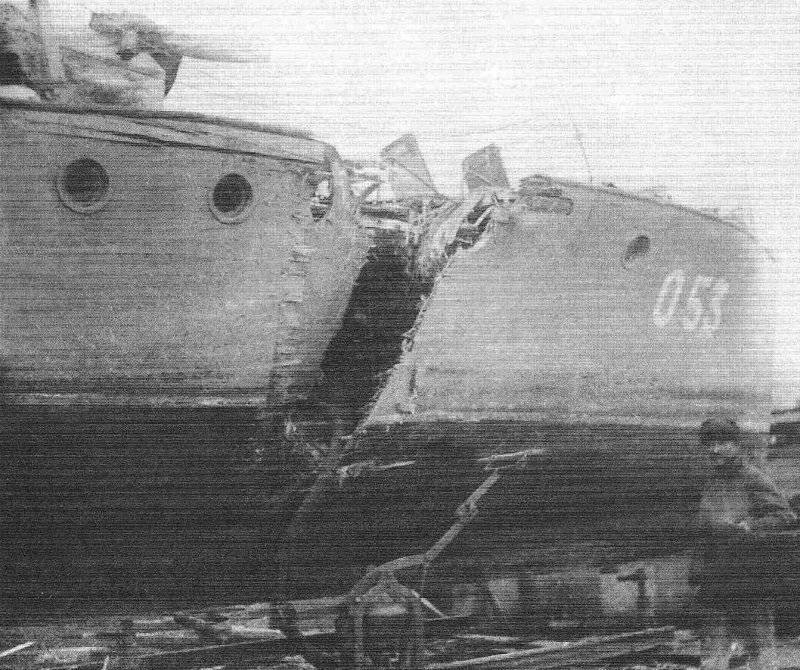

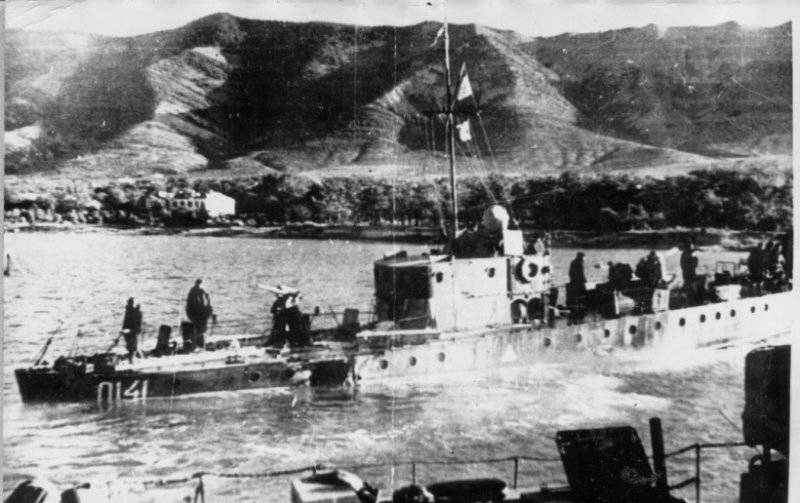
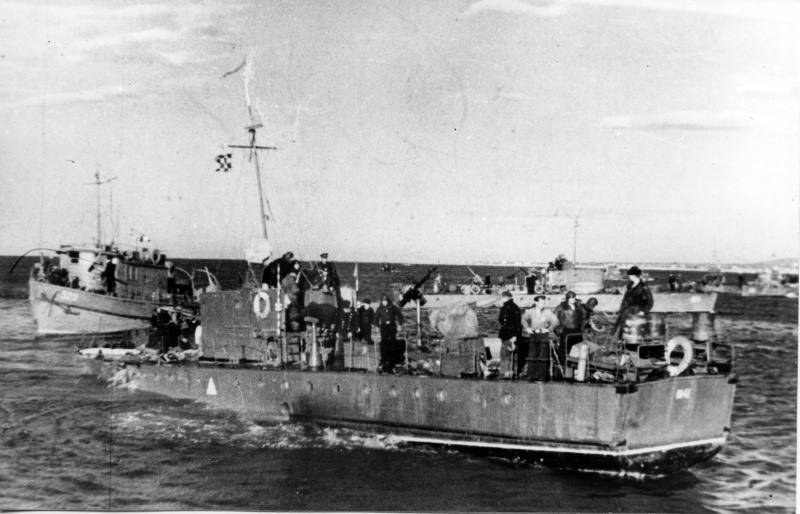
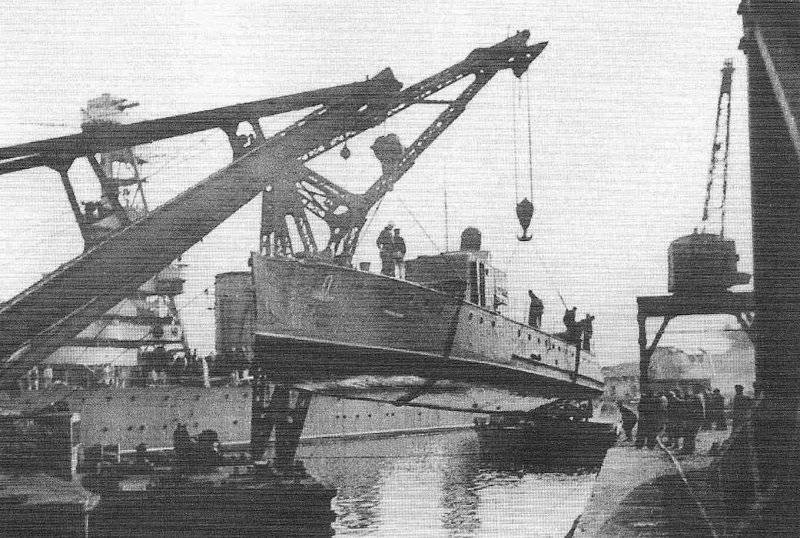
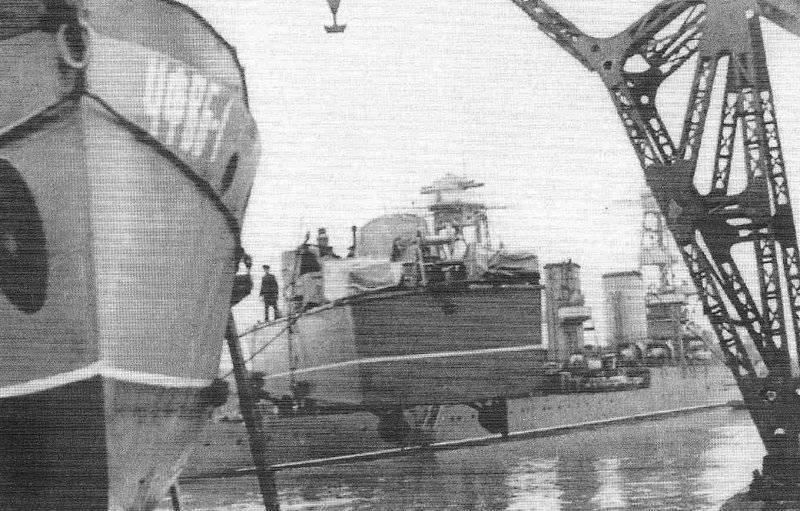
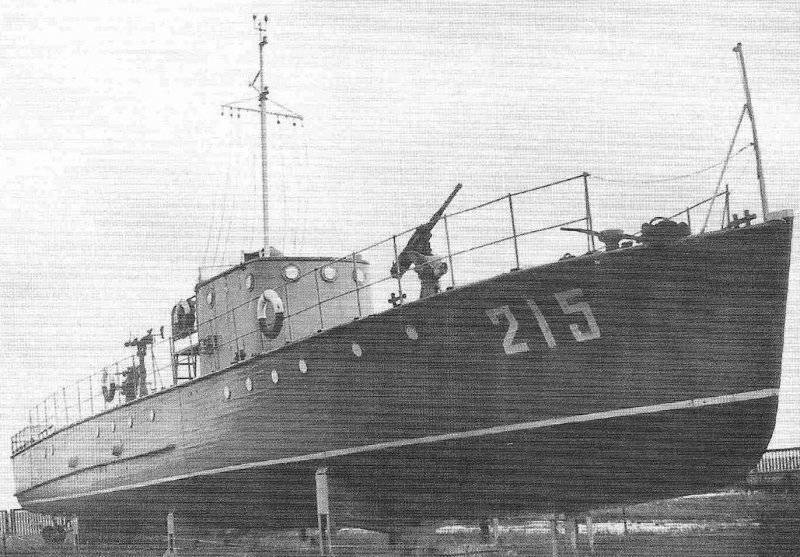
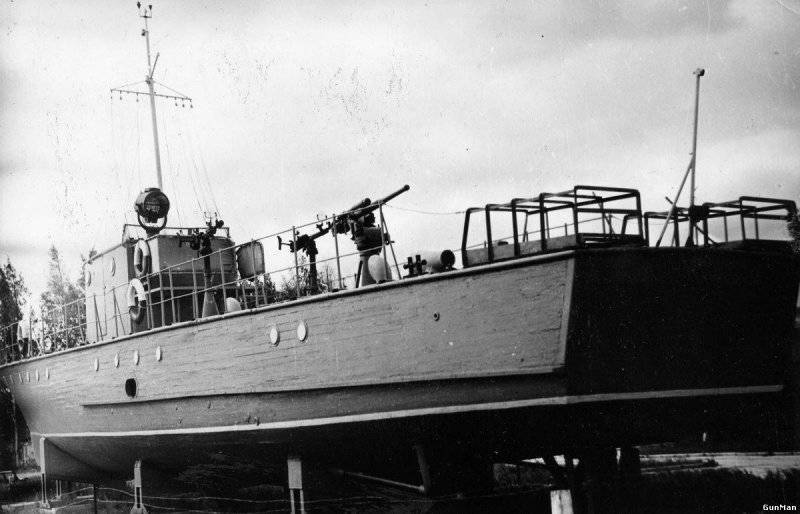
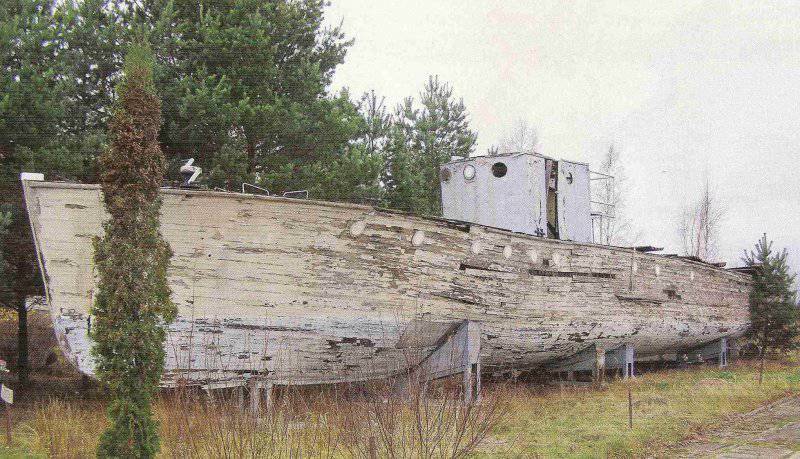
Information